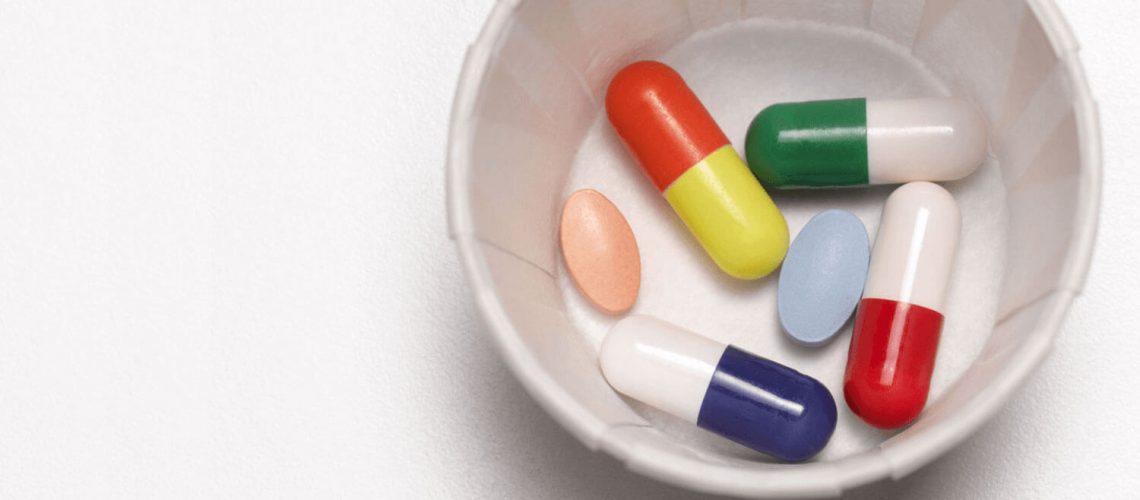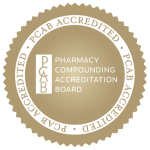KNOWN FACTS:
Medications are part of the treatment for almost all patients who seek medical help from their doctor.
As such, pharmacists are partners with practitioners in treating their patients as part of the triad:
And the communication lines in the triad should always be bi-directional in order to provide best results for all, obviously the focus being on the patient.
NOT SO KNOWN FACTS:
Whereas all practitioners do know and use commercially available drugs to treat their patients, there is still a very large number of practitioners who do not know that they may offer customized treatment options for their patients as COMPOUNDED MEDICINES.
Despite the increasing awareness, the pharmaceutical compounding business is still a very, very low percentage of the drug market. Let us just compare the numbers for
2015 commercial drug market – $425 billion
compounded drug market – $6.4 billion
2016 commercial drug market – $450 billion
compounded drug market – $8.9 billion
Of the approximately 57,000 community-based pharmacies in the United States, about 7,500 pharmacies specialize in compounding services.
That equals to about 13% of total pharmacies.
Yet the revenue equals to 2% of commercial drugs sales.
STARTING WITH THE BASICS
A few Q & A’s from FDA’s website
- What is pharmaceutical compounding?
In general, compounding is a practice in which a licensed pharmacist, a licensed physician, or, in the case of an outsourcing facility, a person under the supervision of a licensed pharmacist, combines, mixes, or alters ingredients of a drug to create a medication tailored to the needs of an individual patient.
- Is combining two or more drugs considered compounding?
Yes, compounding includes the combining of two or more drugs.
- Why do some patients need compounded drugs?
Sometimes, the health needs of a patient cannot be met by an FDA-approved medication. For example:
- if a patient has an allergy and needs a medication to be made without a certain dye; or
- if an elderly patient or a child cannot swallow a pill and needs a medicine in a liquid form that is not otherwise available.
- Are compounded drugs approved by the FDA?
Compounded drugs are not FDA-approved.
Generally, state boards of pharmacy will continue to have primary responsibility for the day-to-day oversight of state-licensed pharmacies that compound drugs in accordance with the conditions of section 503A of the FDCA, although FDA retains some authority over their operations.
However, outsourcing facilities that register under section 503B are regulated by FDA and must comply with CGMP requirements and will be inspected by FDA according to a risk-based schedule.
A few more Q & A’s from the professionals of the industry – American Pharmacy Association
- What is compounding, and why is it necessary?
Compounding is the creation of a pharmaceutical preparation—a drug—by a licensed pharmacist to meet the unique needs of an individual patient (either human or animal) when a commercially available drug does not meet those needs.
- A patient may not be able to tolerate the commercially available drug,
- the exact preparation needed may not be commercially available,
- or a patient may require a drug that is currently in shortage or discontinued.
The U.S. Pharmacopeia Convention (USP) formally defines compounding as “the preparation, mixing, assembling, altering, packaging, and labeling of a drug, drug-delivery device, or device in accordance with a licensed practitioner’s prescription, medication order, or initiative based on the practitioner/patient/compounding pharmacist relationship in the course of professional practice.”
Following are a few examples of how a compounding pharmacist can customize medications based upon a doctor’s prescription to meet a patient’s needs:
- Customize strength or dosage.
- Flavor a medication (to make it more palatable for a child or a pet).
- Reformulate the drug to exclude an unwanted, nonessential ingredient, such as lactose, gluten, or a dye to which a patient is allergic.
- Change the form of the medication for patients who, for example, have difficulty swallowing or experience stomach upset when taking oral medication.
Compounding pharmacists can put drugs into specially flavored liquids, topical creams, transdermal gels, suppositories, or other dosage forms suitable for patients’ unique needs.
Compounding does not include making copies of commercially available drug products, as this is not allowed by law.
- How is pharmaceutical compounding different from drug manufacturing?
Traditional compounding is the preparation of a medication to meet the prescriber’s exact specifications and to be dispensed directly to the patient, pursuant to a valid prescription for that patient.
Pharmaceutical compounding is performed or supervised by a pharmacist licensed by a state board of pharmacy.
Manufacturing is the mass production of drug products that have been approved by the Food and Drug Administration (FDA). These products are sold to pharmacies, health care practitioners, or others who are authorized under state and federal law to resell them
- What is a compounding pharmacy?
While most pharmacies offer some level of compounding, most compounding is done in pharmacies that have made the investment in equipment and training to do so safely and efficiently. The preparations offered by these compounding pharmacies can be nonsterile (ointments, creams, liquids, or capsules that are used in areas of the body where absolute sterility is not necessary) or sterile (usually intended for the eye, or injection into body tissues or the blood).
All licensed pharmacists learn during their training and education to perform basic compounding. In addition, most pharmacies have some compounding tools, such as a mortar and pestle for grinding materials, graduated cylinders for measuring liquids, balances for weighing solids, spatulas for mixing materials, and ointment slabs on which to work. With such tools and through applying their knowledge, all pharmacists routinely prepare nonsterile compounded preparations when requested by prescribers.
Of the approximately 57,000 community-based pharmacies in the United States, about 7,500 pharmacies specialize in compounding services. This means the pharmacists in those facilities spend most or all of their time compounding special preparations for patients. Preparations made in these pharmacies are more likely to include both sterile and nonsterile dosage forms. Compounding also takes place in hospital pharmacies and at other health care facilities
- Who regulates compounding pharmacies? Do compounding pharmacies follow the same regulations as drug manufacturers? Why or why not?
The practice of compounding is regulated by state boards of pharmacy. Community and hospital compounding pharmacists are allowed exemptions to the Federal Food, Drug, and Cosmetic Act if they comply with the regulations outlined in Section 503A. All pharmacists and pharmacies engaged in compounding are subject to oversight by both federal and state authorities.
Pharmacists engaged in compounding are expected to follow applicable standards and regulations for the types of preparations that are compounded.
FDA has oversight for the integrity and safety of the drugs (called Active Pharmaceutical Ingredients, or APIs, by FDA) used in compounded preparations.
The Drug Enforcement Administration (DEA) has oversight for any controlled substances used in the preparation of compounded medications. Controlled substances include narcotics such as hydrocodone, amphetamines, and similar drugs, and drugs such as those used for anxiety and sleep disorders.
In addition, the United States Pharmacopeia (USP) Convention issues standards that apply to compounding. This private, nonprofit organization defines the chemical purity of drugs and also issues practice standards. USP develops standards for the identity, quality, strength, and purity of medicines, dietary supplements, and food ingredients that may be used in compounding preparations. These standards in particular are relevant to compounding pharmacists.
USP General Chapter <797> is a national standard for the process, testing, and verification of any compounded sterile preparations. It provides guidance on preventing microbial contamination and other variances in compounded sterile preparations, regardless of setting (e.g., hospitals, community pharmacies) or who is performing the compounding (pharmacists, nurses, pharmacy technicians, or others).
USP General Chapter <795> provides similar guidance for nonsterile preparations that are compounded in health care settings. It describes categories of compounding (simple, moderate, complex), defines concepts such as beyond-use date and stability, and provides criteria for compounding pharmacists to follow in preparing various drug preparations.
USP General Chapter <800> is a new standard developed by USP that establishes practice and quality standards of hazardous drugs to minimize the exposure to hazardous drugs within health care settings. This standard aims to promote worker safety (pharmacists, pharmacy technicians, veterinarians, veterinary technicians, and many others), patient safety, and environmental protection. This standard was published on February 1, 2016, but will not be officially implemented until July 1, 2018. The current list of hazardous drugs is available from the National Institute for Occupational Safety and Health (NIOSH).
Compliance with all the above and other USP guidelines is considered the minimum standard of practice in pharmacy.
Pharmacy Compounding Accreditation Board – PCAB
Pharmacy Compounding Accreditation is a service of the Accreditation Council for Health Care (ACHC) that assesses the nonsterile and sterile pharmacy compounding process as defined by a specific set of standards that concentrate on the quality and consistency of medications produced.
Currently, Pharmacy Compounding Board Accreditation is not mandatory for compounding pharmacies and there are only about 650 pharmacies that have this coveted board accreditation.
This means that out 7,500 compounding pharmacies, only 650 took the extra steps in professionalism and compliance with the rigorous standards of proper pharmaceutical compounding.
Haldey Pharmaceutical Compounding is one of them.




